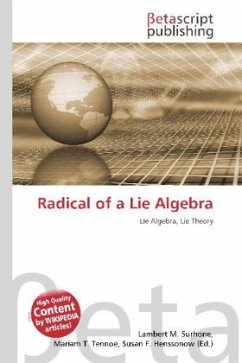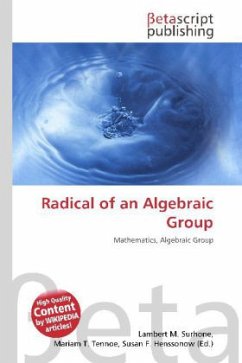
Radical of a Lie Algebra
Versandkostenfrei!
Versandfertig in 6-10 Tagen
26,99 €
inkl. MwSt.

PAYBACK Punkte
13 °P sammeln!
Please note that the content of this book primarily consists of articles available from Wikipedia or other free sources online. In the mathematical field of Lie theory, the radical of a Lie algebra mathfrak{g} is the largest solvable ideal of mathfrak{g}. Let k be a field and let mathfrak{g} be a finite-dimensional Lie algebra over k. A maximal solvable ideal, which is called the radical, exists for the following reason. Firstly let mathfrak{a} and mathfrak{b} be two solvable ideals of mathfrak{g}. Then mathfrak{a}+mathfrak{b} is again an ideal of mathfrak{g}, and it is solvable because it is ...
Please note that the content of this book primarily consists of articles available from Wikipedia or other free sources online. In the mathematical field of Lie theory, the radical of a Lie algebra mathfrak{g} is the largest solvable ideal of mathfrak{g}. Let k be a field and let mathfrak{g} be a finite-dimensional Lie algebra over k. A maximal solvable ideal, which is called the radical, exists for the following reason. Firstly let mathfrak{a} and mathfrak{b} be two solvable ideals of mathfrak{g}. Then mathfrak{a}+mathfrak{b} is again an ideal of mathfrak{g}, and it is solvable because it is an extension of (mathfrak{a}+mathfrak{b})/mathfrak{a}simeqmathfrak{b}/(mathfrak{a}capmathfrak{b}) by mathfrak{a}. Therefore we may also define the radical of mathfrak{g} as the sum of all the solvable ideals of mathfrak{g}, hence the radical of mathfrak{g} is unique. Secondly, as {0} is always a solvable ideal of mathfrak{g}, the radical of mathfrak{g} always exists.












